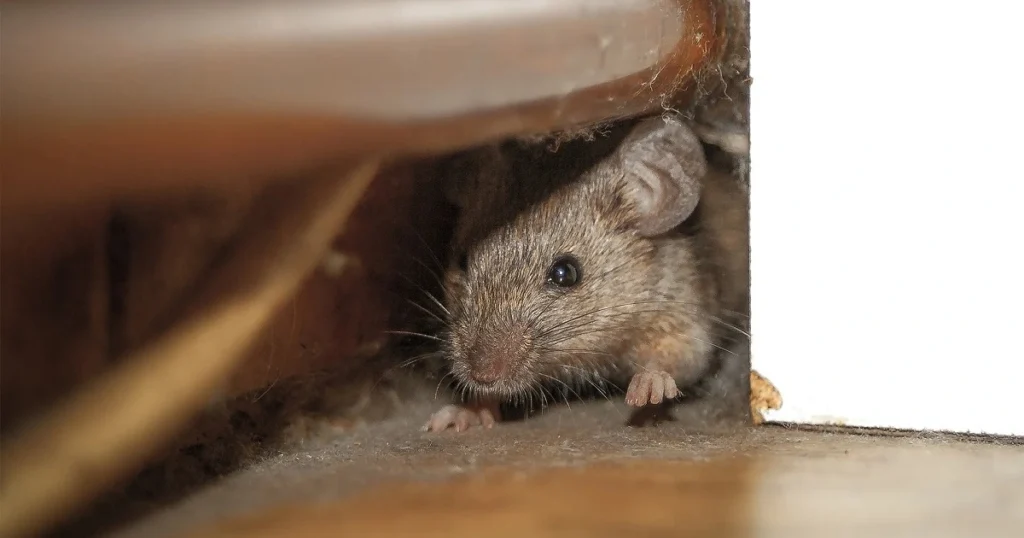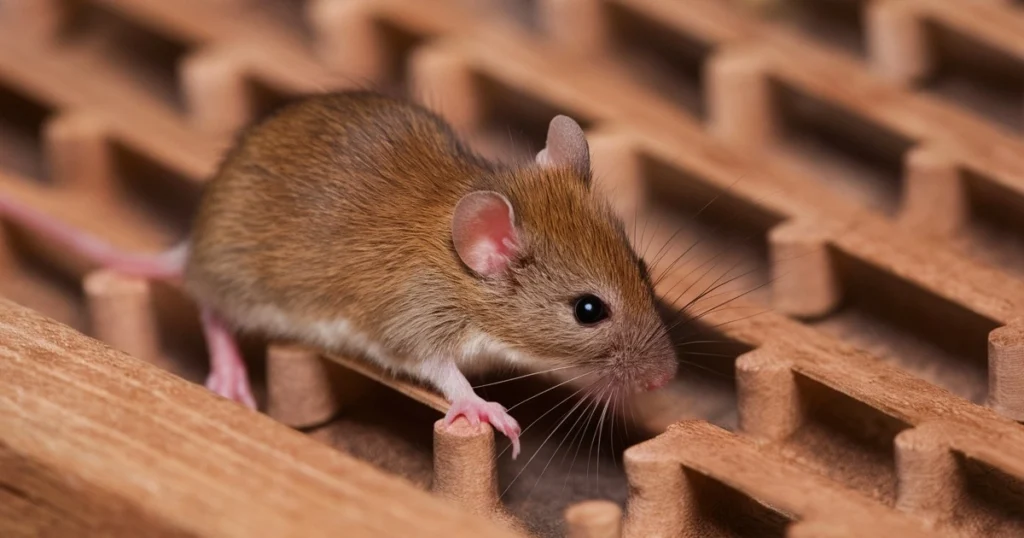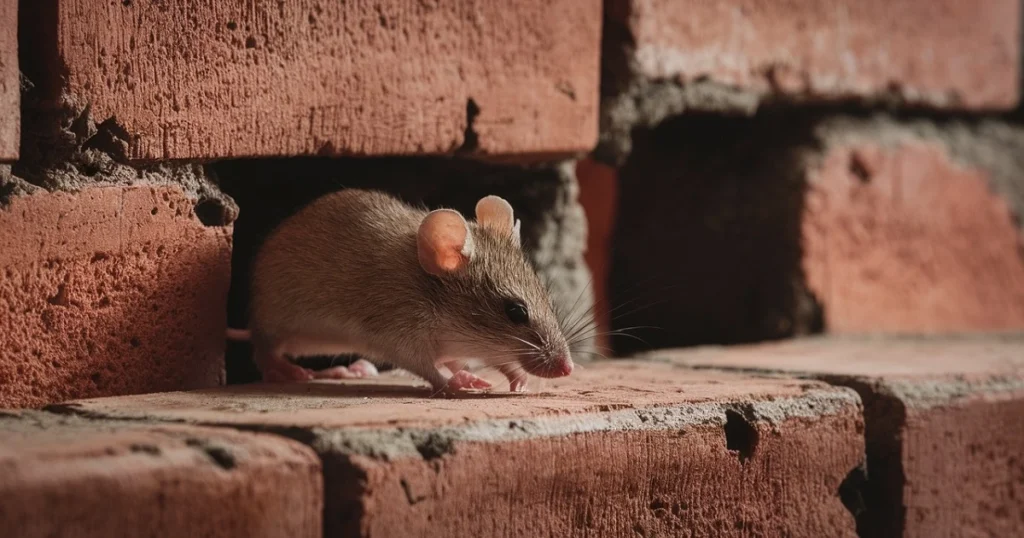
Mice are a common household pest many people encounter during summer. Homeowners often wonder why mice enter their homes during this time of year. This behavior has several reasons, including food availability, temperature changes, and breeding habits.
One reason why do mice come in the house in the summer is food availability. During the warmer months, there is typically more food available for mice outside, but their food sources become scarce as the weather gets colder. This drives them indoors in search of food, water, and shelter. Additionally, mice are drawn to the scent of food, making any crumbs or spills in the house a potential magnet.
Temperature changes are another reason why mice come into the house in the summer. As the weather outside gets hotter, mice may seek refuge in cooler areas of the house, such as basements or crawl spaces.
Rats are often attracted to the moisture and humidity in these areas. Finally, mice are known to breed throughout the year, but they may be more active during the summer months, which can lead to an increase in their populations and a greater likelihood of them entering homes.

During the summer months, rodents tend to be more active and may often be seen scurrying around the house. This is because the warm weather allows them to move around more freely and search for food. Mice are also known to breed more frequently during the summer months, which can increase their population.
However, it is important to note that not all mice come inside during the summer. Some may leave the house to search for food or a new nesting site, while others may return to the same house year after year. Understanding mice's seasonal habits is important in order to effectively prevent them from entering the house.
Mice are attracted to indoor environments because they provide a consistent source of food and shelter. They are particularly drawn to areas with easy access to food, such as kitchens and pantries. Mice can squeeze through entry holes and small openings and cracks in walls, floors, and ceilings, making it important to keep these entry points properly sealed.
In addition, mice are attracted to areas with clutter and debris, which provide a suitable nesting site. To reduce the likelihood of mice entering and nesting inside, it is recommended that the house be kept clean and organized and all food items properly stored. You can tell mice are near when you begin to see chew marks.
Understanding mice's seasonal habits and attraction to indoor environments can help prevent them from entering the house during the summer months. Sealing up potential entry points and cleaning the house can prevent rodent infestations.

Mice can enter houses through a variety of entry points. Identifying these entry points is crucial in preventing mice infestations. This section will discuss the most common entry points for mice.
Structural vulnerabilities are house areas prone to damage or wear and tear. Mice can exploit these vulnerabilities to enter the house to stay warm. The following are some common structural vulnerabilities that mice can use to enter a house:
Openings and gaps are areas where two materials meet or where a material has been cut or drilled. Mice can exploit these openings and gaps to gain entry into the house. The following are some common openings and gaps that mice can use to enter a house:
It is important to seal any openings or gaps in the house to prevent mice from entering. Homeowners should inspect their houses regularly and repair any damage or wear and tear as soon as possible. By taking these precautions, homeowners can prevent mice from entering their houses and avoid the problems associated with a mouse infestation.

Mice are known for their ability to sneak into living spaces undetected. They can enter homes through small cracks and gaps in walls, floors, and ceilings. Once inside, they can damage property and pose a health hazard to humans and pets. This section will discuss two common areas where mice can be found in living spaces: countertops and kitchen areas and bedrooms and clothing.
Mice are attracted to food and water sources, making kitchen areas prime infestation targets. They can climb onto countertops using nearby objects such as chairs, shelves, or walls. Once on the countertop, they can easily access food and water sources. It is important to keep food and water sources out of reach by storing them in sealed containers and cleaning up spills promptly.
Homeowners can use deterrents such as sticky traps or repellents to prevent mice from climbing onto countertops. They should also seal any cracks or gaps in walls, floors, and ceilings to prevent mice from entering the home.
Mice can also hide in clothing and bedding, causing damage and posing a health hazard. They can enter bedrooms through small gaps in walls or floors, or by climbing up nearby objects such as furniture or curtains. Once inside, they can nest in clothing or bedding, leaving behind droppings and urine.
To prevent mice from entering bedrooms, homeowners can seal any gaps or cracks in walls or floors. They can also use deterrents such as peppermint oil or mothballs to repel mice. It is important to regularly clean and inspect clothing and bedding for signs of infestation, and to store them in sealed containers.
In conclusion, mice can be found in various areas of living spaces, including countertops and kitchen areas, bedrooms, and clothing. Homeowners can take preventative measures such as sealing gaps and cracks, storing food and water sources in sealed containers, and using deterrents to prevent infestation. Regular cleaning and inspection of clothing and bedding are also important to prevent damage and health hazards.

Mice can find their way into cars and garages through small openings such as gaps in doors, windows, and walls. They can also climb up the tires and enter through the engine compartment. Once inside, they can cause damage to wires, upholstery, and insulation.
To prevent mice from entering your car or garage, seal any openings and keep the area clean and clutter-free. This includes removing any food sources and storing items in sealed containers. Additionally, using mouse traps or repellents can be effective.
Mice are also known to enter cabinets and drawers for food and shelter. They can easily climb up walls and squeeze through small openings. Once inside, they can contaminate glass or metal containers and food while causing damage to stored items.
To prevent mice from entering cabinets and drawers, it is important to seal any openings and keep the area clean and organized. This includes removing any food sources and storing items in sealed containers. Additionally, using mouse traps or repellents can be effective in keeping mice away.
Overall, it is important to take preventative measures to keep mice out of vehicles and storage areas. By sealing any openings, keeping the area clean and organized, and using mouse traps or repellents, you can effectively prevent mice from causing damage and contamination.

When it comes to finding a cozy spot to nest, mice are experts at finding hidden spaces within a home. These spaces provide shelter from the elements, protection from predators, and easy access to food sources. This section will explore two common areas where mice hide in homes - ceilings and attics, air ducts, and vents.
Mice are agile climbers and can easily access ceilings and attics through small gaps and holes. Once inside, they can create nests and breed, causing significant damage to insulation, wiring, and other materials. To prevent mice from accessing these areas, homeowners should seal gaps or holes using steel wool, caulk, or foam. It is also essential to keep attics and ceilings free of clutter and debris, as these can provide hiding spots for mice.
Air ducts and vents provide an ideal environment for mice, offering a warm, dark, and enclosed space. Mice can enter air ducts through small gaps or cracks and move throughout the system, contaminating the air with droppings and urine. To prevent mice from entering air ducts, homeowners should seal gaps or holes using steel wool or mesh materials. Keeping air ducts clean and debris-free is also crucial, as this can provide a food source for mice.
In conclusion, mice are resourceful creatures that can find their way into hidden spaces within a home. Homeowners can prevent mice from accessing these areas by sealing gaps and holes and keeping areas clean and free of clutter. By taking these steps, homeowners can protect their homes from damage and keep their families safe from potential health hazards.

Sealing all possible entry points is one of the most effective ways to prevent mice from entering a house. Mice can enter through small cracks and gaps in walls, floors, and ceilings. Inspecting the house thoroughly and sealing any openings larger than a quarter inch is important. Materials such as steel wool, caulk, or foam insulation can be used to seal these openings.
Critter Stop, a professional humane wildlife removal company, can help with your pest control needs. Their team of experts can conduct a free inspection of the property and identify all potential entry points. They can then recommend sealing these openings and effectively dealing with rodent infestation.
Food and water sources attract mice. Therefore, it is important to maintain a clean and sanitary environment in the house. This includes storing food in airtight containers, promptly cleaning up food spills and crumbs, and taking out the trash regularly.
Critter Stop recommends that homeowners keep their countertops clean and food debris-free. This will help prevent mice from climbing onto countertops in search of food.
In addition, Critter Stop has a fantastic reputation and online customer reviews because it provides high-quality work and great customer service. Homeowners experiencing problems with mice or other pests can call Critter Stop at (214) 234-2616 for a free inspection. Their team of experts can provide humane wildlife removal services and help prevent future infestations.
Mice come inside homes during the summer months for food, water, and shelter. The warm temperatures outside make it easier for them to survive, and homes provide the perfect environment for them to thrive. Mice can easily squeeze through small openings and crevices, making it easy for them to get inside.
Mice can climb on countertops by using their sharp claws and strong legs. They can also jump up to 12 inches, making it easy for them to reach high surfaces. Mice are attracted to food and crumbs left on countertops, so keeping them clean and free of any food debris is important.
Mice can enter homes through small openings and gaps in walls, floors, and foundations. They can also use pipes and wires as a pathway to get inside. It’s important to seal any openings and gaps to prevent mice from entering your home.
Mice can hide in clothes, especially if left on the floor or in piles. They are attracted to the warmth and shelter that clothes provide. To prevent mice from nesting in clothes, it’s important to store them in sealed containers or hang them up.
Yes, mice are likelier to come inside homes during summer. The warm temperatures outside make it easier for them to survive, and homes provide the perfect environment for them to thrive.
Mice can enter cars through openings and gaps in the car’s exterior. They can also use the car’s air vents and engine as a pathway to get inside. Keeping your car clean and free of any food debris is important to prevent mice from entering.
Mice can enter basements through small openings and gaps in walls, floors, and foundations. They can also use pipes and wires as a pathway to get inside. It’s important to seal any openings and gaps to prevent mice from entering your basement.
Yes, mice can return to the same house if they find a suitable environment for nesting and breeding. To avoid future infestations, it’s important to take preventative measures to keep mice out of your home.
Mice can enter air ducts through small openings and gaps in the ductwork and use them to access different areas of the home. It’s important to seal any openings and gaps in the ductwork to prevent mice from entering.
Mice can enter the ceiling through small openings and gaps in the walls or roof. They can also use pipes and wires as a pathway to get inside. Sealing any openings and gaps is important to prevent mice from entering your home.
Mice may leave the house in summer if they find a better environment for nesting and breeding. However, it’s important to take preventative measures to keep mice out of your home to avoid future infestations.
Mice can enter drawers through small openings and gaps in the back or sides. They can also climb up the back of the drawer and enter through the top. To prevent mice from entering, drawers must be kept closed and sealed.
Mice can enter basements through small openings and gaps in walls, floors, and foundations. They can also use pipes and wires as a pathway to get inside. Sealing any openings and gaps is important to prevent mice from entering your basement.
You can determine the entry points for mice in your house by inspecting the exterior and interior of your home for any openings and gaps. Look for small holes, cracks, and gaps in walls, floors, and foundations. You can also use a flashlight to inspect the inside of your home for any signs of mice or nesting.
Effective methods to prevent mice infestations in the summer include sealing any openings and gaps in your home, keeping your home clean and free of any food debris, storing food in sealed containers, and using mouse traps or bait stations.
Seeing a single mouse in your home may indicate a larger problem, as mice are social creatures and often live in groups. It’s important to take preventative measures to keep mice out of your home to avoid future infestations.
Mice may enter your home even if it’s clean, as they are attracted to warmth, shelter, and food. It’s important to take preventative measures to keep mice out of your home to avoid future infestations.
Mice are more active during the summer, as the warm temperatures outside make it easier for them to survive and breed. During winter, mice may seek shelter inside homes to escape the cold temperatures outside.
Visit our Critter Library and learn more about our furry friends